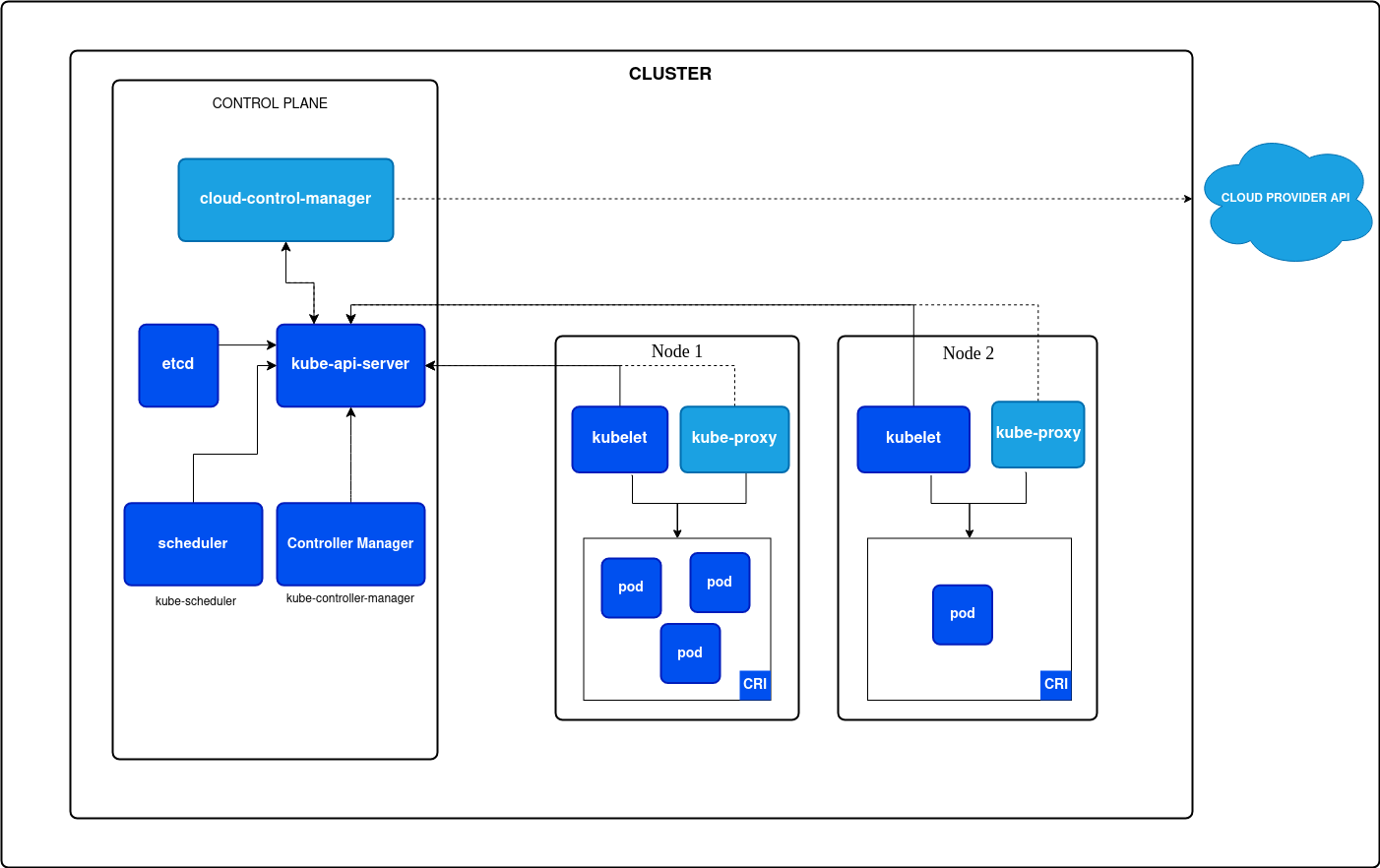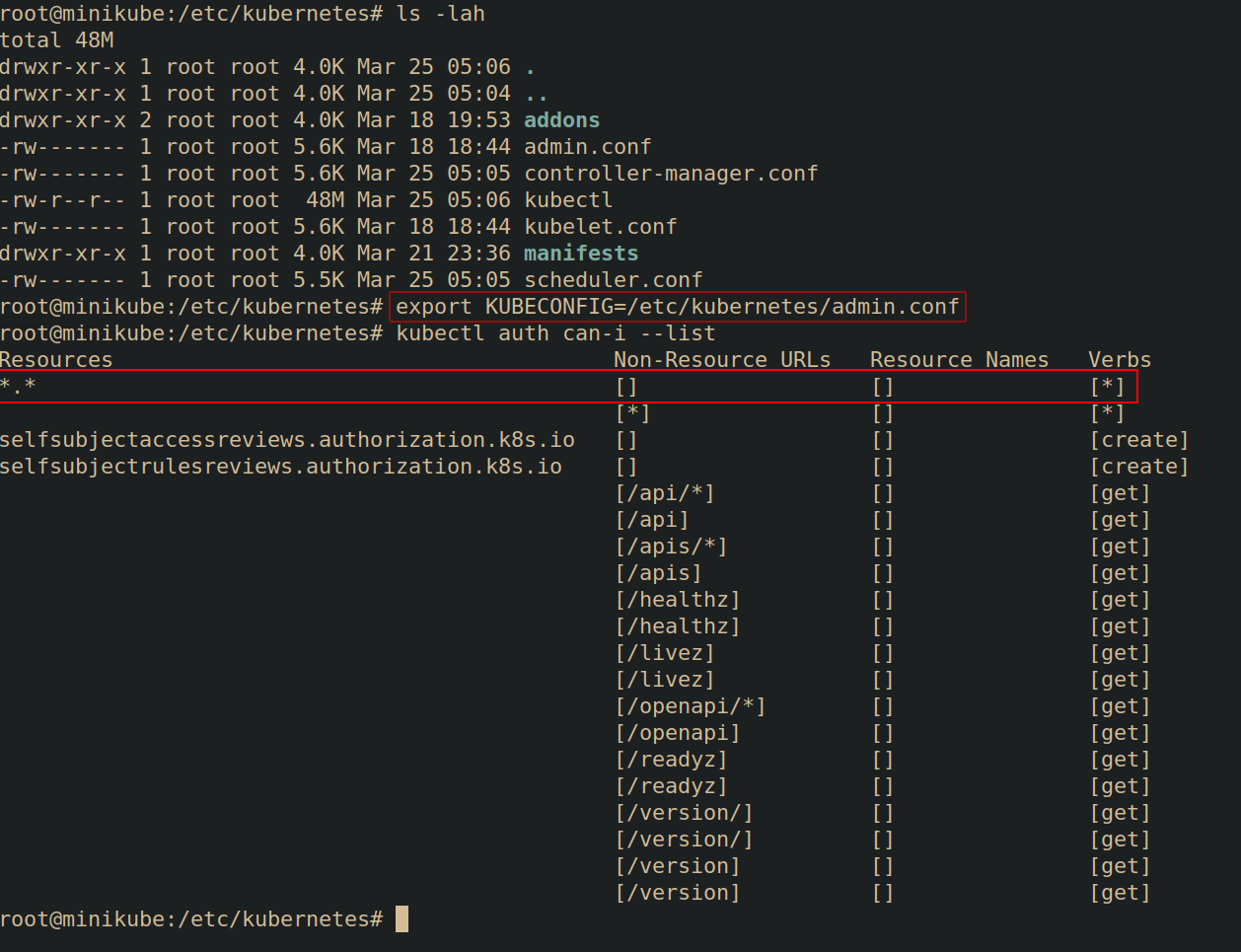Nodes
Worker nodes exist within the data plane which is the plane in a Kubernetes cluster that carries out actions given from the control plan. This is where Pods are deployed and thus your applications reside. The data plane typically consists of:
- Worker Node: One or more computers responsible for running workloads (such as pods)
- Kubelet: Process that runs on each Node. Responsible for executing tasks (such as deploying pods) provided to it by the API server.
- Pod: An object that represents one or more containers (sometimes called workloads)

Master Node
The Master Node(s) exists within the Control Plane and carries out the administrative actions for interacting and managing Kubernetes. The control plane consists of:
- API Server: The communication channel for any interaction with Kubernetes. Any interaction with Kubernetes must traverse the API server.
kubectlis the normal way of interacting with the API server but it can also be communicated with via any tool capable of making API calls such ascurl. - Scheduler: Watches the API server and listens for Pods that have not been assigned to a worker node. The scheduler is responsible for finding a Node to place the pod on.
- etcd: Version controlled key/value store. This holds the current state of the cluster.
- Controller manager: Is a collection of controllers each of which have control loops that watch the API Server for state changes to the cluster and make changes if the actual state is different than the desired state.
- Cloud Controller Manager: Similar to the Controller Manager but interacts with your cloud provider's APIs.
All of these components together are known as a cluster. Clusters can be configured in many ways, but a production environment is likely being run in a "high availability" configuration with at least 3 control plane nodes that are kept in sync and n number of worker nodes that Pods are deployed to.

etcd server can be configured in a few other ways than show above.
Attacking Nodes
It is usually true that gaining access root-level access to a node participating in kubernetes is very much the "endgame" for most environments. Root access to a kubernetes node allows an attacker to access information from all pods running on that node by exploring the overlay2 storage driver, deploy Static Pods, plunder /etc/kubernetes (discussed below), and more.
/etc/kubernetes
/etc/kubernetes is where kubernetes information is stored in most default configurations.
/etc/kubernetes: This is where kubeconfig files typically live as well as configuation information for control plane components (if on a control-plane node)/etc/kubernetes/manifestsis the path where the Kubelet looks for Pod manifests to deploy See Persistence -> Static Pods. There are a few default Pod manifests:- etcd.yaml
- kube-apiserver.yaml
- kube-controller-manager.yaml
- kube-scheduler.yaml
Often times you can find very sensitive information in the /etc/kubernetes directory on a node such as Initial Access -> Kubeconfig file. Which can be exfiltrated to an attacker machine to gain access to the cluster.
